Food and the City New York’s Professional Chefs, Restaurateurs, Line Cooks, Street Vendors, and Purveyors Talk About What They Do and Why They Do It
An unprecedented behind-the-scenes tour of New York City’s dynamic food culture, as told through the voices of the chefs, line cooks, restaurateurs, waiters, and street vendors who have made this industry their lives.
In Food and the City, Ina Yalof takes us on an insider’s journey into New York’s pulsating food scene alongside the men and women who call it home. Dominique Ansel declares what great good fortune led him to make the first cronut. Lenny Berk explains why Woody Allen’s mother would allow only him to slice her lox at Zabar’s. Ghaya Oliveira, who came to New York as a young Tunisian stockbroker, opens up about her hardscrabble yet swift trajectory from dishwasher to executive pastry chef at Daniel. Restaurateur Eddie Schoenfeld describes his journey from Nice Jewish Boy from Brooklyn to New York’s Indisputable Chinese Food Maven.
From old-schoolers such as David Fox, third-generation owner of Fox’s U-bet syrup, and the outspoken Upper West Side butcher “Schatzie,” to new kids on the block including Patrick Collins, sous chef at The Dutch, and Brooklyn artisan Lauren Clark of Sucre Mort Pralines, Food and the City is a fascinating oral history with an unforgettable gallery of New Yorkers who embody the heart and soul of a culinary metropolis.
Ina Yalof has been writing books and articles about such diverse subjects as medicine, science, religion, and happiness for more than thirty years. Her books include the widely acclaimed oral history Life and Death: The Story of a Hospital, What It Means to Be Jewish, How I Write (coauthored with Janet Evanovich), What Happy Women Know, and Food and the City. Yalof’s articles have appeared in numerous national publications, including GQ, Harper’s Bazaar, and New York magazine. She lives—and eats—in New York City.
Established writer Ina Yalof was not not connected to the New York City food scene when she decided to write about it. Nor was she a native New Yorker and did not know her way around the city too well. So why is someone with her background writing about such a trendy topic? And how was she able to produce a fascinating and unique look as such a well documented subject? She tells us.
BAF: You are quite adamant about this in the book that you’re not a food blogger or writer. That is an interesting way to approach a book like this.
Ina Yalof: That’s absolutely true because that way, I could come at the subject with my reader’s questions in my mind, meaning that my questions, knowing not much of anything, were the way I figured a reader would approach the same thing. Although I did a lot of research on it, it’s the first time that I’ve ever written a book where I came in almost cold on the subject. It was so much fun and such an eye-opener. I was flying by the seat of my pants and I learned along the way.
BAF: Did traveling around doing this give you a new appreciation or different appreciation of the city?
Ina Yalof: Absolutely. I really was not an established New Yorker, believe it or not. I’d only been here two years when I started this book. I moved here from Vermont.
I had traveled here and I did live in New Jersey for quite a while, so I guess you’d call it a semi New Yorker, but yes, In terms of traveling through the other boroughs, that was totally new to me. In fact, one of the stories that I like to tell is how I went looking for somebody in the craft service. I came up with Stacey Adler. I called her up and asked her if I could come out and do an interview with her and she said sure. I said, “Where can I meet you?” She said, “My office is in Greenpoint.” I had no idea where Greenpoint was and I said, “Could you please just give me the directions?” She said sure, “You take the 1 to New York to the L,” I don’t remember now, but I got there and I said, “Where am I?” I had no idea where I was and what borough I was in. I had to learn very quickly where all these people were and how to get there.
BAF: You’re in New York for two years. You want to write about food in New York and you’re not in the food ‘scene’. Where do you start? How do you start?
Ina Yalof:The reason I decided to do food was because when I came back, what I noticed was many people had some involvement with food, which I hadn’t seen when I had been living in New Jersey and visiting New York. Everybody was eating food, photographing food, writing about food, blogging about food, sharing food. The chefs were becoming rock stars. I thought, “Maybe this is a great topic, so how do I go about it?”
The one thing that inspired me was one day while I was actually thinking a little bit about in the back of my mind. I was walking down Amsterdam Avenue and I passed a butcher shop. The butcher was sitting there facing the door, and he looked like he was ready to welcome me. I went in and I decided to talk to him a little bit. I asked him a lot of questions and more specifically what it was like to be a butcher in this day and age when butcher shops are dwindling quickly. He just was so interesting, the things he started telling me. He was so accessible. His stories were fascinating, and I said, “Maybe there’s a book here.” The next person I approached was a guy on a street, an Egyptian guy who had a small food cart. I started talking to him. As it happened, he was willing to talk also about what he did. I said, “Surely, if I’ve got two out of two, then I can start researching this.”
How do you go about finding new people? There’s a lot of different ways, obviously. The first thing I did was I went on the internet because that’s the 21st century way of finding anything. I made a list of people in different categories that I felt would be interesting. Eventually as I started telling people I was writing this book, people started recommending other people to meet. As I got to the recommended people, rather than the people that I found which are the chef’s that have their own salad dressings, the rock stars. I threw out that whole list that I got on the internet.
I started looking around, walking through the city, keeping my eyes open, talking to people. I walked into many a restaurant and looked around like Denino’s Pizza in Staten Island. I wanted someone from Staten Island, and I didn’t have anybody. I just got in a car one day and drove around. The first place that looked interesting to me was Denino’s Pizza. I walked in and I convinced the woman who owned it to give me an interview. It was a great interview. It kind of went like that.
Also, there’s a woman in the book who’s name is Lulu Powers. She’s a caterer. After my interview with her, I said, “I’m looking for some chef’s who are wonderful chefs and great people, but who have not quite made it to the Food Network yet.” She said, “Talk to my sister Sarah, and see what she can do.” Sarah introduced me to the general manager of Boloud He introduced me to Ghaya Oliveira who is one the best interview in the whole book. She is the executive pastry at Daniel. She was a Tunisian woman who came here and spoke absolutely no English. She came to help out her dying sister. Ghaya was a economics major at school and was at the equivalent of Tunisian Wall Street. She came here and started as a dishwasher and worked her way up to Executive Pastry Chef at Daniel. It was a wonderful heartfelt story, which I probably would have never gotten if I just went by the internet and try and find people that way.
BAF: In the book you have a wonderfully eclectic group of people. Are there any common traits or characteristics that you found?
Ina Yalof: Absolutely. I guess I was most taken with the line cooks because they were the ones who really put in some time. Out of twenty-four hours they put in maybe eighteen or nineteen hours a day standing at hot stoves. I was wondering why if you’re getting minimum wage, why in the world would you want to keep coming back day after day after day, after chefs are yelling at them? They never even see the people that they’re making the food for. What I saw in them was something that I saw in just about everybody in the food business. That is, you need to have grit, you need to have guts, and you need to have perseverance but above all, you need to have a passion for food. That came out in just about everybody that I interviewed in one way or another. There’s something about food, and not just food, but as somebody said, “It was the fire that drew me in.” I know exactly now after doing three years of research what they meant.
BAF: This is almost a two-answer question. What surprised you most about the food and the industry and about New York?
Ina Yalof: What surprised me most about New York is how fast everything has moved but also how global it has become. It’s a city so full of immigrants now that you have an opportunity if you go to the restaurants where the immigrants are cooking, and they are all over the five boroughs, there’s almost no need to travel anywhere. All you need really, is your metro card. If you love tasting the foods of other countries, you’re going to find it here. I think New York has always been a melting pot so that did not come as much of a surprise. I knew that, but I didn’t realize how strongly the immigrant population felt about the food, how connected they were to the food from their homelands. For example, Alexander Smalls from the Cecil restaurant is a descendant of slaves. His grandparents were slaves. His dream way always to open up a restaurant that was based on the African diasporas. He did and it’s a very successful restaurant.
I guess the situation of the food trucks and how important food has become to all New Yorkers to the degree at some point where they would probably rather eat out than go to a show in many cases. In many more cases, it’s more expensive now to eat out than go to a show. That was probably that, and the quick pace; I call it an energized city. That’s what drew me in. I love the energy of New York City.
BAF: There’s really no way to definitively write about food in the city, or is there?
Ina Yalof: Absolutely. It’s true and that’s what makes this book so unique. Someone asked me to describe it and I said, “What if a microcosmic cross-section of New York City’s food operators turn the guy you see selling halal at the corner of 53rd and 6th to the executive chef in Rupert Murdoch’s dining room, what if they were to pen their autobiographies on at the same time?” The results would be a series of tell-alls. That’s just what you’re going to find in Food and the City so that this is a book about people who happen to be in the same industry, rather than a book about food.
BAF: As you said, the rock stars, the people that you read about and see everyday who are always in the news.
Ina Yalof: The only person that I’ve had really heard of, believe it or not, was Dominique Ansel. (He’s, for those who do not know, is the guy behind the world-famous Cronut.) I didn’t realize how important that was going to be because the first Cronut came off the line in May of 2013. That was right around when I started my book, so I knew that he had done it, but I didn’t really know what was going to happen to the degree that people are still lining up around the block to get a Cronut,… I had my first one, actually three weeks ago and I totally understand why they’re lining up. It was that good.
I really didn’t want anyone who, as I said, has a salad dressing or has kitchen tools named after them because they already have saturated the market, those people. We all know the Bourdain’s and the Boulud’s. I wanted the people who we don’t know.
The idea of the book was to get behind the scenes and these are the people that are behind the scenes. I have a chapter called “Starting From Scratch”. In that chapter is a guy who is now eighty-five also and still working whose name is Sam Solasz. He is the founder of Master Purveyors. I found him because somebody had said to me, “The meat industry has moved to Hunt’s Point. You should really get out to Hunt’s Point.” I went online and was looking up Hunt’s Point and I see Master Purveyor and I called and made an appointment with a fellow named Mark.
When I went out to see him, Mark said to me, “You really need to see my father. He’s the one you should be talking to.” When I started talking to him, it turned out that he’s a holocaust survivor. His story about coming here from Bialystok, Poland, and being in a ghetto in Bialystok. Those are the kind of stories that you or my readers, or myself would never ever have the opportunity to know. When we sit down and we have a steak at Peter Luger, do we realize that that steak was bought at Master Purveyor? That Andy Rubenstein, who bought that steak, is the third generation who’s dealt with the guy from Master Purveyor? It’s amazing. Those are things, when you give a voice to people who otherwise don’t really have a platform. It’s amazing the stories that they tell you. What I came away realizing is that everyone has a story if someone will only listen to it.
BAF: You didn’t avoid well known restaurants like Boulud but you got behind the name. You get behind the scenes of his empire and see who the people who were actually helping build it.
Ina Yalof: Right, and that was exactly the point. I wanted people also from the high-end restaurant that you read about but not necessarily the chefs from those restaurants.
I wanted somebody from Daniel and Daniel Boulud’s empire, if you will. That’s where Ghaya came from, but I also noticed that there was a real hole in the people that I had selected because I had nobody from a Danny Meyer restaurant. He’s really now almost an iconic name in the city. He owns everything from Shake Shack to Gramercy Tavern. I called up Gramercy Tavern and asked for a waiter, and I figured who would be better to represent the behind the scenes at a Danny Meyer restaurant? A waiter. In fact, I was absolutely right in that respect because the waiter from there is David McQueen, who tells an incredible story. Part of what he says that I really love is that if you’re not willing to recognize the fact that you are working in a servile position, job, then you do not belong working as a waiter. You’re here to serve people. If you want to be a good waiter, then you have to realize that that’s your job.
BAF: Did you specifically choose a waiter from one of Danny Meyer’s restaurant because they are well known for treating their staff extremely well.
Ina Yalof: I didn’t really know how well they treated the staff. But when I went to interview David McQueen, he also said to me when we were through with our interview, “You should go and listen to a staff education class on selecting wines.” What they do, is they bring in all the waiters. They come in even if it’s not their day to work. They open up a big room and they bring in somebody from a winery and she gives a forty-five minute talk on wine so that these waiters are better educated and then can become better waiters for the people they’re serving.
Danny Meyer is a genius at hospitality. That’s the most important thing to him. I think the service is more important to him than the food. It’s true, if you get a bad meal, I’m just guessing at this, if I get a bad meal at a restaurant and the service is spectacular, I’m more likely to go back and give it a second try than if I get a great meal with bad service I will not go back.
BAF: Do you feel that the dining scene in New York is changing in the sense for better or worse when you lose places like the four seasons and also with proliferation of chains coming in?
Ina Yalof: The reason the Four Seasons is closing is because the owner of the Seagrams building right now felt that it was time for younger fuzzier, if you will, downtown chaps to come in. He has every right to feel that way. It’s not his restaurant but it’s his space. He can do whatever he wants with it.
The sad thing about the closing of the Four Seasons is that it was such an iconic restaurant. It’s been an iconic restaurant for sixty-five years or fifty-five or whatever. It would be like hearing Peter Luger was closing, or Keen’s Steakhouse for that matter. You feel horrible about it. By the way, the Stage Delicatessen, remember the Stage?
BAF: I do.
Ina Yalof: I interviewed a woman she was one of my first interviews and I’m just thinking about her now. She said to me how much she loved working there and it’s such an icon and one day she comes into work and this place is shuttered. Done. Over. Just like that. People are closing down because of the rent. They’re closing down because they’re making way for condominiums.
BAF: Do you feel that New York is losing some of it’s uniqueness with all these issues.
Ina Yalof: Absolutely, yes. I do. I definitely do. There’s a lot of now shuttered restaurants on Broadway. Not only shuttered restaurants, but shuttered stores along Broadway. I live on the upper-west side and they are putting up condominiums all over the place, or co-ops or whatever they are. It breaks my heart to see this fellow Sammy Annastasiou from City Diner, he’s also in the first chapter. He writes about the fact that the metropolitan diner, which was on 76th and Broadway, and he used to know everybody who came in there. He knew how they took their eggs. He knew if they wanted their coffee with decaf or cream, or whatever. Then he said one day after putting his heart and soul and guts into this metropolitan diner, he comes in one day and there’s a notification that the wrecking ball is coming in two weeks and they’re putting up a condominium. Any empty space there is in New York is going to be taken over now by dwellings because that’s where the big money is.
BAF: Well maybe I should ask, so you’ve got the book out, what’s next for you?
Ina Yalof: The answer to your question, “What’s next,” is you can come up with a great idea for me you get dinner with me at the new Four Seasons whenever it opens. I don’t know. I haven’t figured it out yet. I’m really overwhelmed with the attention that this book is getting and I’m spending most of my time now just doing the press and all that and loving every second of it.
Copyright © Booksaboutfood.com 2016
“[A] compelling volume by a writer whose beat is not food. What she offers are first-person accounts from more than 50 individuals behind city institutions like Zabar’s and Peter Luger … with plenty of opinions to savor.”–Florence Fabricant, The New York Times
An Amazon Best Book of June 2016
“Ina Yalof’s Food and the City presents a uniquely wide view of the food landscape in New York by sharing the engaging voices and compelling stories of the vibrant people living and working in this world every day. By honing these tales, Yalof gives lucky readers an insider’s perspective on the diverse food world in New York City”. –Eric Ripert, executive chef, Le Bernardin
“Each story in this book inspires me with the turn of the page. These are stories of passion, motivation, hardship and resilience. Ina Yalof has captured the ingredients for success in the NYC restaurant scene while weaving tales that showcase the unwavering spirit of our fellow New Yorkers.”
–Marcus Samuelsson, James Beard-award winning chef and New York Times-bestselling author of Marcus off Duty and Yes, Chef!
“Ina Yalof’s book captures well once unknown tales of New York City’s hard working chefs. I am proud that she featured our pastry Chef at restaurant DANIEL, Chef Ghaya, and her unique story. She’s been through a moving journey in her personal and professional life and her overall loyalty and dedication will inspire all.” –Daniel Boulud, chef/owner, The Dinex Group
“Personality and humor shine brightly throughout these essays…From the oldest Chinese restaurant in New York to a Rikers Island food service overseer, each of these vignettes shares a common theme about devotion and dedication within the vast gastronomical spectrum…Collectively, Yalof’s assortment of cuisines and memories paints a multiculturally diverse food tapestry, and each individually embodies a passion of food artistry that crosses generations, cultures, nationalities, and all manner of palates. A wide-ranging, toothsome smorgasbord of Gotham’s good eats and the tireless men and women behind each plate.”
–Kirkus Reviews
“A noteworthy collection of intriguing stories that illustrate the perseverance, hard work, and passion for food that one must have to succeed. Fans of food memoirs and essays are sure to enjoy.”
–Library Journal



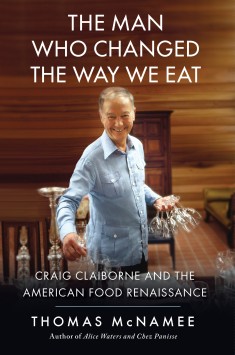
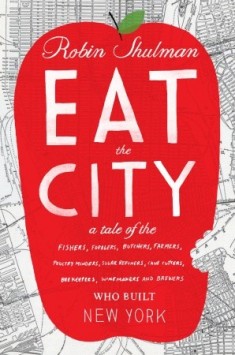
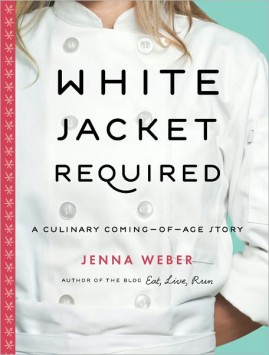
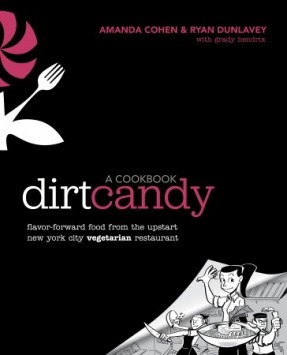
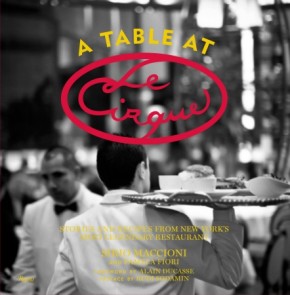
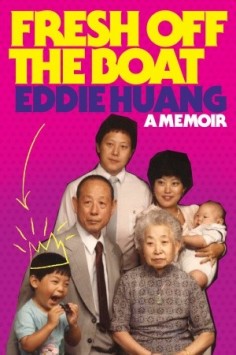
Leave a Reply